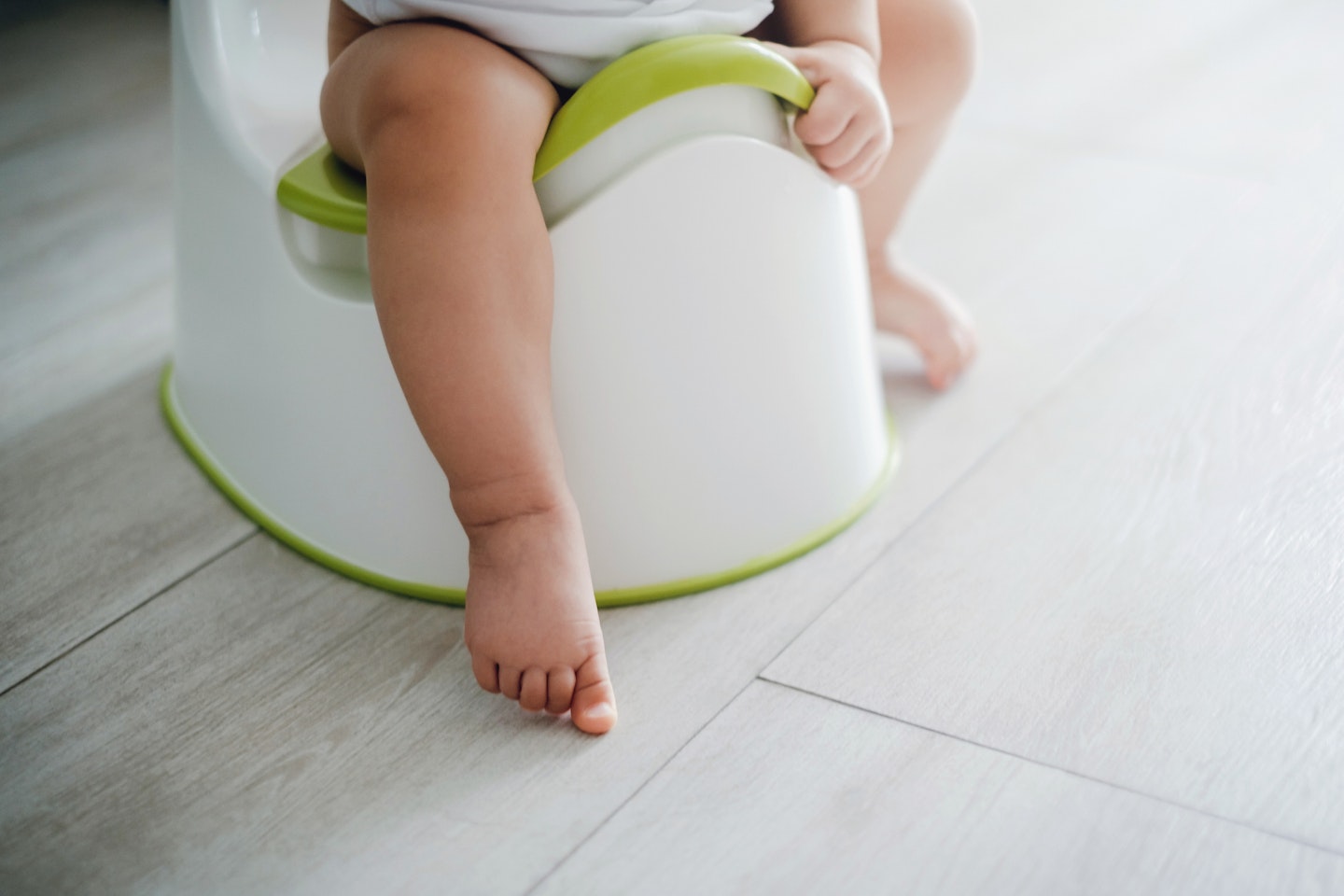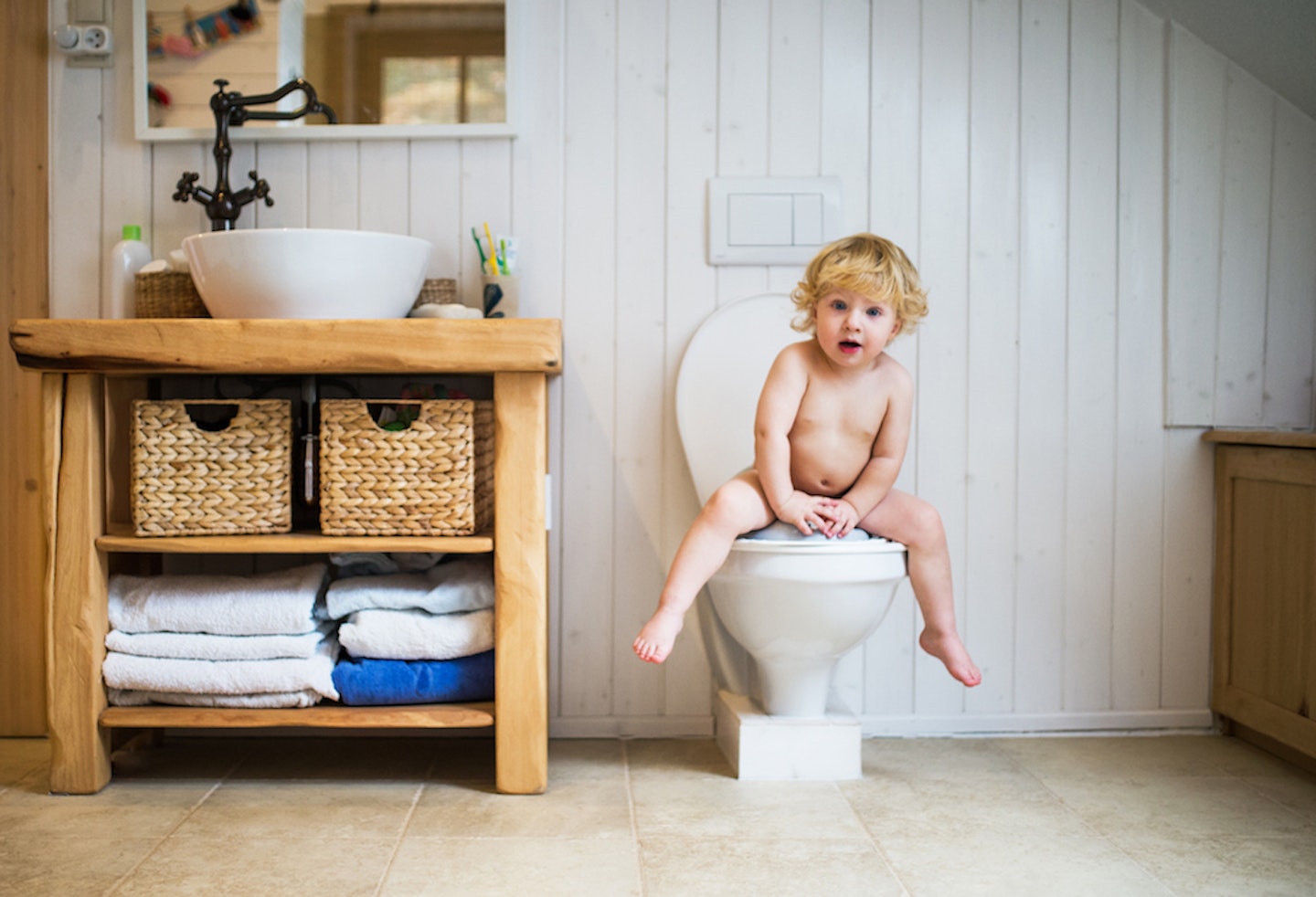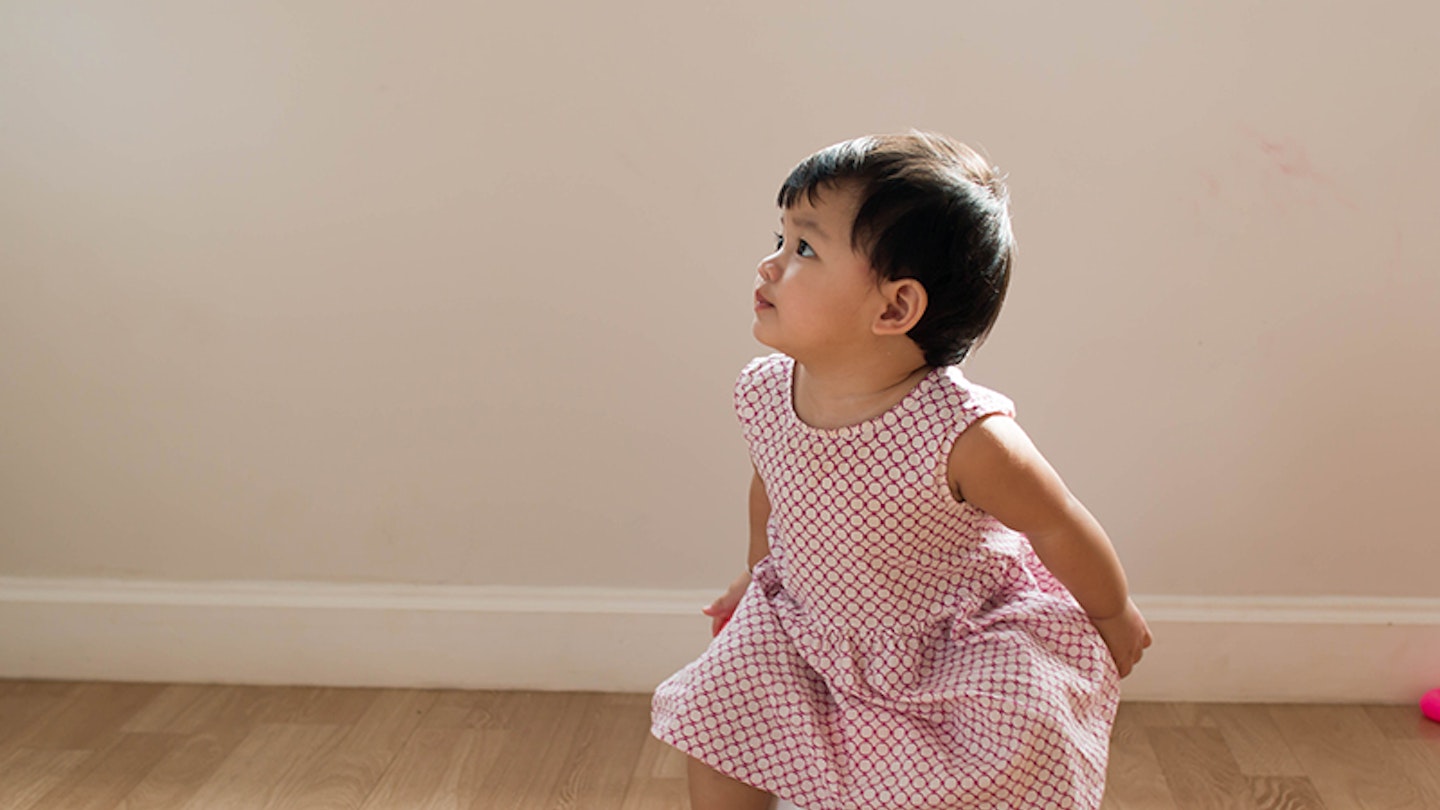It’s a massive (and exciting) milestone for your toddler but knowing how to potty train them can also be a stressful time for parents. Firstly, you’re going to need to be sure they're ready and then you'll want to stock up on certain potty training products (including a potty seat of course) then you’ll require a lot of patience and an open mind — so get ready.
You may even want to buy some potty training pants to make the transition from nappies to potty a little easier. And if you’re really ready to get stuck in you may also want to give the three day potty training method a go.
Here, we chat to founder of the Potty Training Academy and mum of three, Amanda Jenner, to answer some of your most asked potty training questions, as well as round up all the tips and tricks you need to get going.
14 potty training tips
1. Make sure they’re ready: Remember, every child is different and there is no ‘right time’ for your child to start potty training. However, the NHS says most parents will start thinking about it between the age of two and two and a half. Keep an eye out for signs that your child may be ready, such as them letting you know when they’ve soiled their nappy, or when it’s going to happen. But do not force them to use a potty.
2. Let them choose their potty: "I always recommend this," says Amanda. “Get them involved from the offset. This makes the whole process fun for them, and they get excited about it.”
3. Choose a good potty spot: the bathroom is the best and most obvious place to keep a potty. However, if this room isn’t easy to access (or upstairs) pop it somewhere that your child can reach easily.
4. Have more than one potty (if possible): a potty upstairs and downstairs is always a good idea so that you always have one at hand. It’s also useful to have a travel potty too, for when you’re out and about.

5. Learn their schedule: does your child do a poo around the same time every day? If yes, then try taking their nappy off around this time and encouraging them to use their potty instead. A targeted time will make things easier for you, rather than having to constantly try and gauge when your child’s ready to go. If you child isn’t happy about using the potty, do not force them, pop the nappy back on and try again in a couple of weeks.
6. Wee then poo: it’s easier to get your child to start weeing on a potty before getting them to poop. Encourage them to get weeing first as this will increase their confidence to use it to poo.
7. Go after meal time: after food is a good time to encourage your child to sit on the potty, because eating and digesting will (hopefully) urge them to poo.
8. Make sure to give praise: when praise is due, give it! Expressing what a great job your tot has done on the potty will only help increase their confidence. Avoid rewards, like sweets and toys. Insead, opt for something like a potty training reward chart, then your child will physically be able to see how well they’re doing. Plus, they’ll love popping that sticker on when it’s deserved.
9. When accidents happen, keep calm and carry on: It’s easy to get frustrated if your child has an accident but try to keep calm, even if you don’t feel it. “You wouldn’t be normal if you didn’t get upset when they stand in front of you and poo” says Amanda. “But rather than say ‘don’t worry, it’s okay’ be firm and say ‘that’s not where the poo goes is it, that’s not right”. Pick up the poo in their pants, pop it in the potty and take it to the toilet so they can see where it should go. It’s much better to say this is right and this is wrong than ‘never mind’. But give them lots of praise and attention when they do get it right.”

10. Get a potty training book: reading a story to your tot about going to the toilet in your spare time, or even while they’re on the potty, can teach them more about going to the toilet. It may also help them relax too.
11. Take them to the toilet with you: sometimes the best way to learn is by example. The next time you go to the toilet try taking your toddler with you. Talk them through what you’re doing and show them how easy the process is.
12. Teach girls to wipe front to back: when your girl has mastered the potty and is now learning to wipe her bottom, make sure you teach her to wipe front to back. This will prevent urinary tract infections from occuring.
13. Teach boys to wee sitting down first: when your child is potty training they may not be able to gauge if they need to wee or poo. Encourage your boy to sit down on the potty, as this will encourage him to poo if he needs to go after or before weeing. If he’s mastered how to wee standing up he could forget to poo, leading to constipation. Always encourage your boy to sit on the loo or potty at least once a day.
14. Try a potty training game: this can help to build positive associations with the potty before you even start. Have lots of fun with it and your toddler will (hopefully) start the potty-training process wanting to take his nappy off.
How to potty train FAQs
How do I start night time training?
Potty training during the day and night can differ massively. "Potty training in the day teaches them to exercise their bladder, making their bladder stronger," says Amanda. "Then at night when they’re asleep they have to have a really strong feeling to wake them up when they need to go, and some children don’t wake up.
"What I suggest is to get potty training fully underway and get them completely dry in the day for at least a month before you consider night time training. Don’t start night time training until you notice that in the morning their nappy is almost dry, as this is an indication that they’re ready to start."
Ensure you buy some nighttime kit such as a mattress protector, and training pants, so if there are any accidents it’s not so difficult to clean up. Put a potty in their room at first as they may not be able to get to the loo in time, and buy a night light so they feel happy getting up in the night. “Avoid drinks 30 to 40 minutes before bed, including milk, fruit and fruit juices," says Amanda. "They are still young and their bladder cannot hold as much as an adult’s overnight.”
Is my child ready for potty training?
Looking out for potty training sides is the best way to determine that your child is ready to start using a potty and if they're not showing signs, leave it. "I get a lot of emails from parents saying, 'my child has turned two, I need to start potty training next week' and I’ll ask if they’ve shown any signs," says Amanda. "They’ll say 'no, I just want them out of nappies'. That’s a big mistake. I’m not saying wait until they’re showing signs when they’re five or six years old, but you have to see that they are actually physically ready to do it as well, because it will make the job so much harder if they’re not."
Below are a few things Amanda suggests looking out for that show your child is ready to be potty training
• They are stopping in their tracks
• Looking down when they’re doing something in their nappy
• Insisting on a nappy change when it’s soiled
• Saying that they’re doing a wee or a poo, showing interest
• Longer periods between nappy changes
What age should my toddler start potty training?
Generally speaking, children aren't ready to start using a potty until they are between 18 months and three years old, but remember every child is different and try not to be tempted to compare. "There’s this myth that potty training boys takes long than potty training girls," says Amanda. "They’re actually not, or not as far as I’ve ever seen. You get the odd lazy boy, but you get the odd lazy girl.
"Obviously as there are extra things that boys have to consider, I'd recommend going for a potty with a tall splash guard at the front, as boys tend to pee over the top, and get your boy to sit back a bit more so that they’re conscious that they’ve got extra things that they need to tuck in. Even if your child takes longer than their friends, there's no such thing as can't."
How long does potty training take?
“Toilet training takes from a few weeks to a month on average to master but all children are different," says Amanda. "If your child has toilet-trained siblings they may be quicker.”
Should I use a potty or toilet?
"I always say start on the potty and move up to the toilet, as a child can get to it a lot quicker," says Amanda. "That way you can have it wherever you are, rather than them going 'I need a wee-wee', then having them hold on, as that’s when accidents happen."
Of course, once your child is getting better at holding on and can stay dry for longer, then you can move to a potty seat and then onto the toilet itself.

